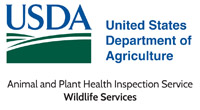U.S. Department of Agriculture: Animal and Plant Health Inspection Service
Document Type
Article
Date of this Version
12-2014
Citation
DeVault TL, Blackwell BF, Seamans TW, Lima SL, Ferna´ndez-Juricic E. 2015 Speed kills: ineffective avian escape responses to oncoming vehicles. Proc. R. Soc. B 282: 20142188. http://dx.doi.org/10.1098/rspb.2014.2188
Abstract
Animal–vehicle collisions cause high levels of vertebrate mortality worldwide, and what goes wrong when animals fail to escape and ultimately collide with vehicles is notwell understood.We investigated alert and escape behaviours of captive brown-headed cowbirds (Molothrus ater) in response to virtual vehicle approaches of different sizes and at speeds ranging from 60 to 360 km h-1. Alert and flight initiation distances remained similar across vehicle speeds, and accordingly, alert and flight initiation times decreased at higher vehicle speeds. Thus, avoidance behaviours in cowbirds appeared to be based on distance rather than time available for escape, particularly at 60–150 km h-1; however, at higher speeds (more than or equal to 180 km h-1) no trend in response behaviour was discernible. As vehicle speed increased, cowbirds did not have enough time to assess the approaching vehicle, and cowbirds generally did not initiate flight with enough time to avoid collision when vehicle speed exceeded 120 km h-1. Although potentially effective for evading predators, the decision-making process used by cowbirds in our study appears maladaptive in the context of avoiding fast-moving vehicles. Our methodological approach and findings provide a framework to assess how novel management strategies could affect escape rules, and the sensory and cognitive abilities animals use to avoid vehicle collisions.


Comments
U.S. government work.